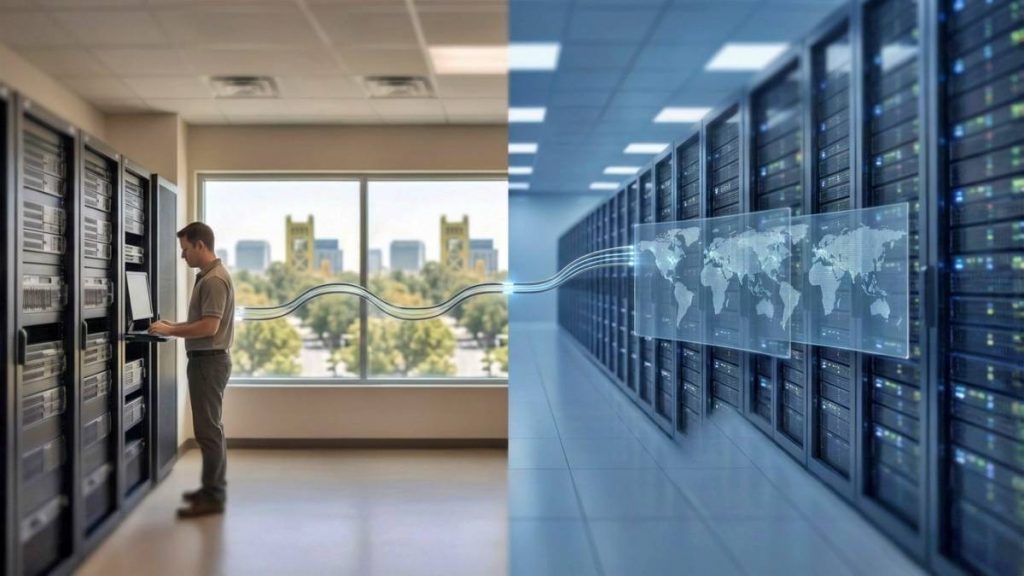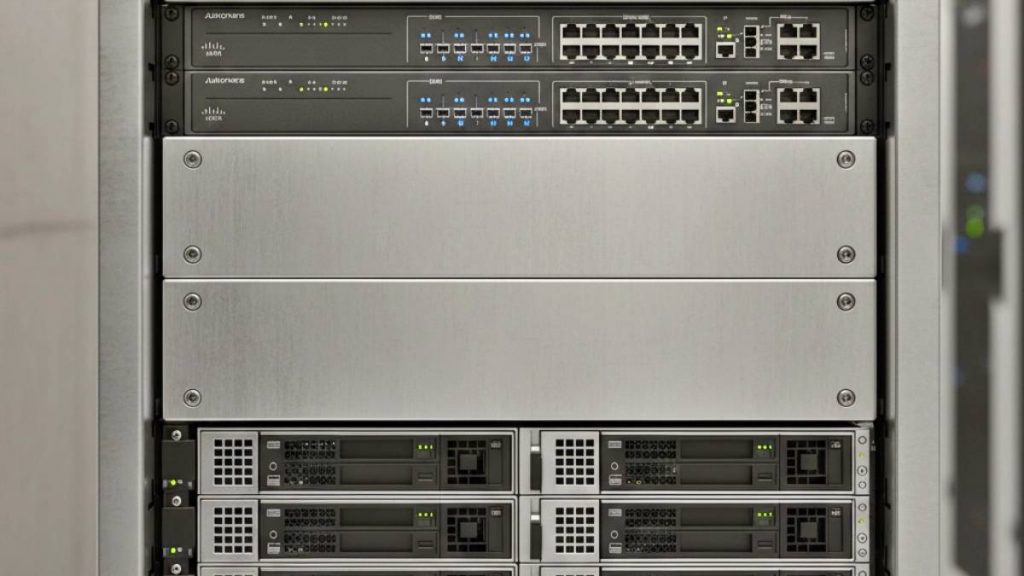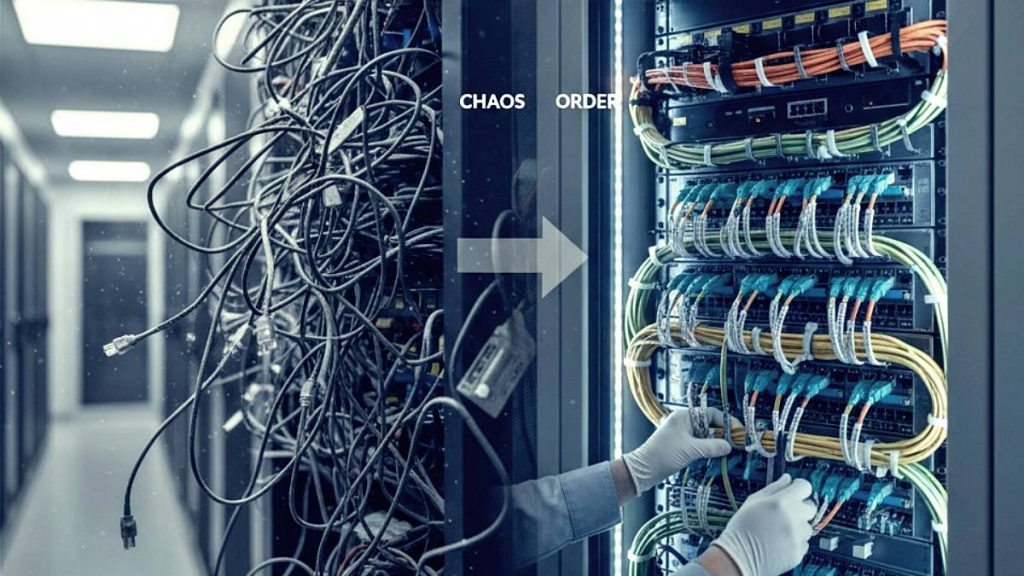It hasn’t been that long since data center monitoring meant someone walking around with a clipboard, checking gauges, and writing down numbers. Those days are over; today’s data centers are equipped with sensors that never sleep, constantly feeding information to systems that can identify problems before they escalate into disasters.

If you’re evaluating data centers for your business, understanding how modern monitoring works isn’t just nice-to-have knowledge: it’s essential. The difference between a facility with basic monitoring and one with a sophisticated sensor network could mean the difference between smooth operations and costly downtime.
What Real-Time Monitoring Actually Means
Real-time monitoring in a modern data center means continuous, automated tracking of everything that matters to your equipment’s health and performance. We’re talking about thousands of data points collected every second, not every hour or day.
Think of it like the difference between checking your car’s oil once a month versus having a dashboard that constantly shows you engine temperature, oil pressure, and fuel levels. The real-time approach enables you to identify and address issues while they’re still minor and fixable.
The key term here is “automated.” These systems don’t rely on human memory or schedules. They’re always watching, constantly measuring, always ready to alert operators when something’s not right.
The Sensor Network Explained
Modern data centers use dozens of different sensor types, each with a specific job:
Temperature and Humidity Sensors track the environmental conditions that can make or break your servers. These aren’t just measuring general room temperature: they’re monitoring hot spots, cold spots, and gradients throughout the facility. Some facilities have sensors in every rack, giving operators a detailed heat map of the entire floor.
Power Monitoring Sensors watch electrical systems at multiple levels: from the main utility feed down to individual circuits and even specific equipment. They track voltage, current, power factor, and can detect irregularities that might indicate failing equipment or overloaded circuits.
Airflow Sensors measure how air moves through the facility. Poor airflow can create hot spots even in a well-cooled room. These sensors help operators optimize cooling systems and catch blocked vents or failed fans before they cause problems.
Vibration Sensors might seem unusual, but they’re incredibly valuable. Excessive vibration can indicate failing mechanical equipment, loose connections, or even structural issues. They’re particularly important for monitoring generators, UPS systems, and cooling equipment.
Security and Access Sensors track who’s entering what areas and when. Every secure area has sensors that create an audit trail of all access.
Leak Detection Sensors are placed throughout the facility, especially near cooling systems and under raised floors. Water and electronics don’t mix, and early detection can prevent catastrophic damage.
Technology Advances Changing the Game
The big leap forward isn’t just more sensors: it’s about smarter sensors and better ways to connect them.
Wireless Sensor Networks have significantly reduced the complexity and cost of monitoring installations. Instead of running cables to every sensor, modern systems can use wireless protocols specifically designed for industrial environments. This means sensors can be placed anywhere they’re needed without major infrastructure work.
IoT Integration enables sensors to communicate not only with the local monitoring system but also with cloud-based platforms that can correlate data across multiple facilities and systems. This broader view helps identify patterns that might not be obvious from a single location’s data.
AI and Machine Learning are where things get really interesting. These systems don’t just collect data: they learn what normal looks like for each environment. They can spot subtle patterns that indicate developing problems, often days or weeks before traditional monitoring would catch them.
For example, an AI system might notice that a particular server rack’s temperature has been gradually increasing over several weeks, even though it’s still within normal limits. Combined with slight changes in power consumption and airflow patterns, it might predict a cooling system failure before it happens.
Real-World Benefits You Can Count On
The benefits of advanced monitoring translate directly to business value:
Preventing Outages Before They Happen is the big one. Every minute of downtime can cost thousands of dollars, and some outages can reach into the millions. Real-time monitoring systems can catch problems in their early stages when they’re still fixable without service interruption.
Energy Optimization might not sound exciting, but it can save serious money. By understanding exactly how power and cooling systems are performing, operators can optimize settings for maximum efficiency. Many facilities discover they can reduce energy costs by 20% or more with better monitoring and optimization.
Compliance and Documentation become automatic. Many industries follow policies that include strict requirements for environmental monitoring and documentation. Modern sensor networks create detailed records that satisfy auditors without manual data collection.
Remote Management capabilities enable facilities to be monitored and managed by experts who aren’t physically on-site. This is particularly valuable for businesses with multiple locations or those that want access to specialized expertise.
Predictive Maintenance shifts maintenance from a reactive to a proactive approach. Instead of replacing equipment on a schedule (or after it fails), systems can predict when maintenance is actually needed based on performance data.
Questions to Ask When Vetting a Data Center
When you’re evaluating potential data center partners, here are the key monitoring questions that will help you separate the leaders from the laggards:
“What sensors do you have, and where are they located?” A modern facility should have sensors throughout the space, not just at a few key points. Ask to see their monitoring dashboard during your tour.
“How often do you collect data, and how quickly can you respond to alerts?” You want continuous monitoring with alert response measured in minutes, not hours.
“What kind of predictive capabilities do your systems have?” Basic monitoring tells you what happened. Advanced systems predict what’s going to happen.
“Can I access monitoring data for my equipment?” Some facilities provide customers with dashboards that show limited environmental conditions surrounding their specific equipment.
“What’s your track record for preventing outages versus actual outages?” A facility with good monitoring should be able to show you instances where they caught and fixed problems before they caused service interruptions.
“How do you handle sensor failures or blind spots?” Sensors can fail, too. Quality facilities have redundant monitoring and procedures for handling sensor outages.
The Bottom Line
Real-time monitoring with sensor networks isn’t just a nice-to-have feature; it’s become a table-stakes requirement for serious data center operations. The technology has advanced to the point where there’s really no excuse for operating blind.
When evaluating data center partners, pay attention to their monitoring capabilities. Ask detailed questions, request demonstrations, and don’t settle for vague answers about “24/7 monitoring.” The facilities that have invested in comprehensive sensor networks and advanced monitoring systems are the ones that will keep your equipment running reliably.
The data center industry has learned that prevention is always cheaper than recovery. Sensor networks and real-time monitoring are the tools that make prevention possible at scale. For businesses that rely on uptime, selecting a facility with advanced monitoring isn’t just smart —it’s essential.
Your data and applications deserve infrastructure that’s constantly watched, continuously optimized, and always ready to prevent problems before they become disasters. That’s what modern monitoring delivers, and it’s what you should expect from any serious data center partner.







